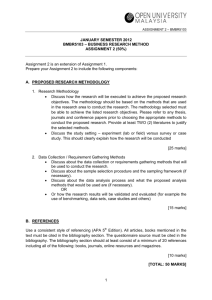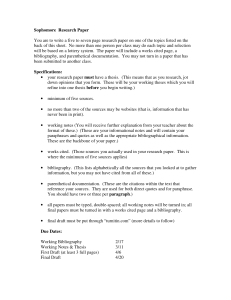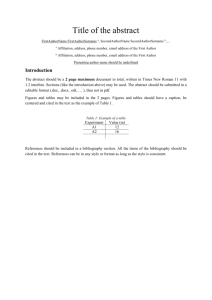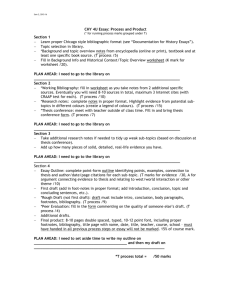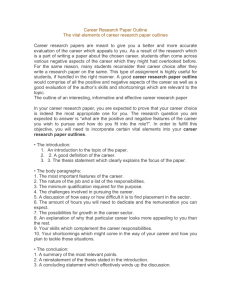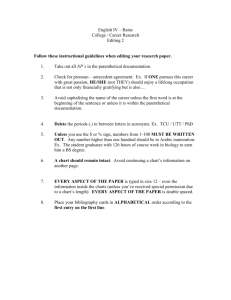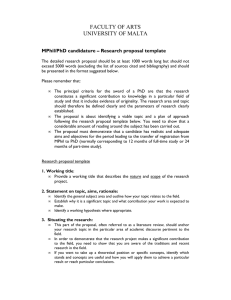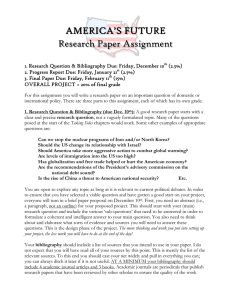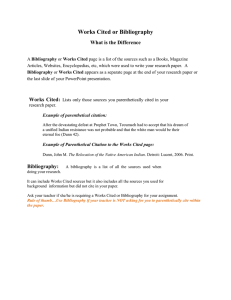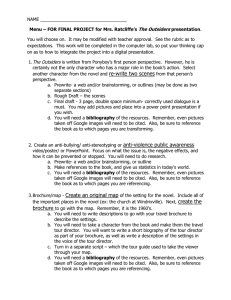Grade 11 Biology 2014-2015 - Westgate Mennonite Collegiate
advertisement
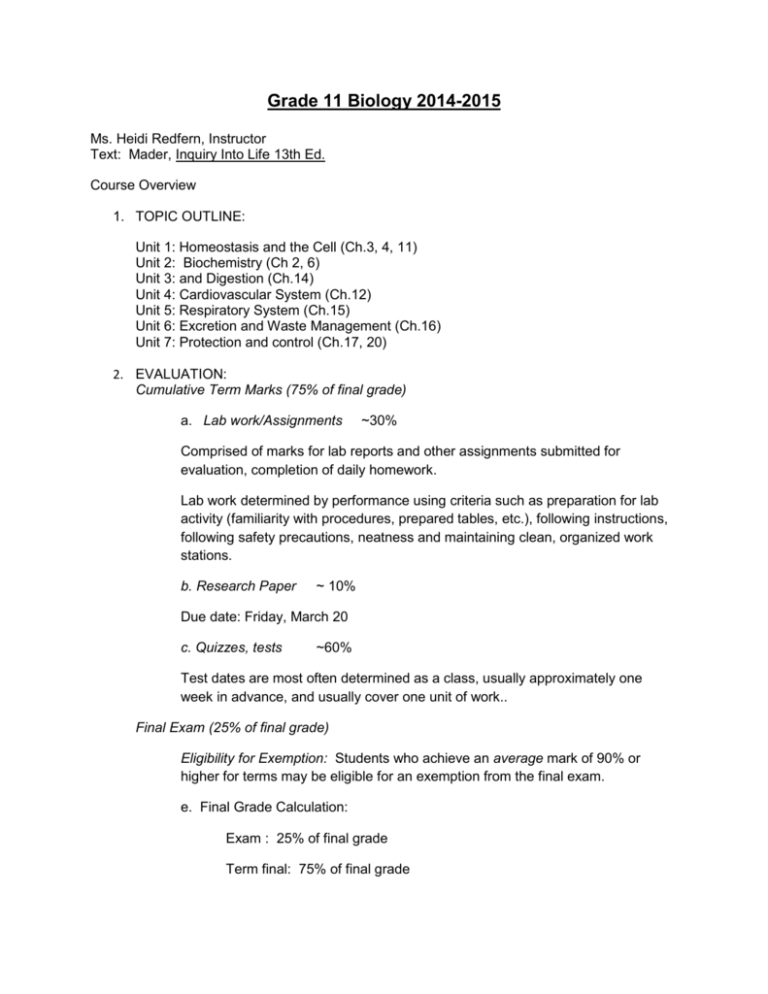
Grade 11 Biology 2014-2015 Ms. Heidi Redfern, Instructor Text: Mader, Inquiry Into Life 13th Ed. Course Overview 1. TOPIC OUTLINE: Unit 1: Homeostasis and the Cell (Ch.3, 4, 11) Unit 2: Biochemistry (Ch 2, 6) Unit 3: and Digestion (Ch.14) Unit 4: Cardiovascular System (Ch.12) Unit 5: Respiratory System (Ch.15) Unit 6: Excretion and Waste Management (Ch.16) Unit 7: Protection and control (Ch.17, 20) 2. EVALUATION: Cumulative Term Marks (75% of final grade) a. Lab work/Assignments ~30% Comprised of marks for lab reports and other assignments submitted for evaluation, completion of daily homework. Lab work determined by performance using criteria such as preparation for lab activity (familiarity with procedures, prepared tables, etc.), following instructions, following safety precautions, neatness and maintaining clean, organized work stations. b. Research Paper ~ 10% Due date: Friday, March 20 c. Quizzes, tests ~60% Test dates are most often determined as a class, usually approximately one week in advance, and usually cover one unit of work.. Final Exam (25% of final grade) Eligibility for Exemption: Students who achieve an average mark of 90% or higher for terms may be eligible for an exemption from the final exam. e. Final Grade Calculation: Exam : 25% of final grade Term final: 75% of final grade 3. BONUS MARKS 5% Max. possible Earned by submitting weekly biology article accompanied by a summary or critique (response). Submissions must include: A. copy of article B. a separate sheet of loose-leaf with: a. Title of article b. source and date of article c. date due d. summary or critique e. student’s name. These articles will be due by 2:40 every second Friday. (This is not the same as in my mail tray on Monday morning.) Because this is a bonus situation, participating students will be expected to remember the due dates and times, and work submitted will reflect an attitude of going beyond the minimum. Articles chosen should be those that arouse student’s interest, rather than simply being the minimum acceptable length. It is also important that the articles be understood. An article review frame is available upon request to assist in the format expected. Note: 1. This course involves memorizing relatively large volumes of information. Regular review, (especially to make certain that notes are organized and complete) rather than last minute cramming is highly recommended. Frequent review of notes will also reveal areas of difficulty. Students are encouraged to take the initiative to ask for help often, so that questions that need to be answered do not develop into problems that hinder progress. 2. Students will be responsible for taking their own notes. BIOLOGY 30S TERM ASSIGNMENT (10% of CUMULATIVE TERM MARK) 1. TOPIC General topics: (you should pick a very specific topic within these general themes) 1. 2. 3. 4. Maintaining homeostasis in various conditions Aging and the Body Technology and wellness The muscular-skeletal system Cannot be overemphasized – it will be apparent to the reader whether or not the author was engaged by or excited about the subject matter. Must be specific! It is essential to remain focused on the intent of the paper. This is to answer a question, and the entire paper should be geared to attain that goal. It is almost impossible to achieve that goal if the topic chosen is a disease, illness, inherited condition, etc. In spite of good research, these are most likely to result in descriptions of causes, symptoms and treatments, and as such, are unacceptable for this assignment. Debating the efficacy of a treatment might be a possibility, although venturing into the realm of evaluating medical treatments may be beyond the level of most grade 11 research papers. 2. LENGTH Three to four pages, twelve point font, double-spaced, including bibliography but not including charts / diagrams and or illustrations. The length of the paper is not as crucial as the quality; nevertheless, it is unlikely that an excellent job would be done with three pages. If you are considering going beyond six pages, be sure that you can justify the inclusion of the additional material. 3. RESOURCES Five or six works should be cited, which may include up to three internet sources. Scientific periodicals or journals (hard copies in the library or electronic versions using EBSCO) are excellent sources for up-to-date information. (Electronic versions of print materials DO NOT count as internet sources.) Papers will NOT be accepted without a usable bibliography. 4. CREDIT Must be given wherever it is due! Use parenthetical notation to acknowledge sources in the body of your work, and follow the style guide in the Student Agenda for the bibliography. If in doubt it is always better to include more detail than to leave some out here. NOTE – It is of the utmost importance that any internet address cited will be the end point location of your source. Entering the address should take the marker directly to the document or work cited. Any illustrations, graphs, diagrams, charts, etc, must be accompanied by information about the source also – in the location they are used as well as in the bibliography. Do not use these unless reference to them is made in the paper and they appear in the appropriate location. Long internet addresses may be described by a key word in parentheses in the body of the paper. Hard copy of any and all information taken from website(s) and electronic journal articles (from EBSCO or otherwise) must be submitted with the final copy. These may certainly be marked-up and highlighted and do not need to be new fresh copies. 5. STYLE Do not attempt to be humorous. Do not be casual – like, you know, like don’t use abbs or cntrcts – the exception being acronyms after the full terms that have been introduced. Try to avoid first and second person personal pronouns. Do proofread your work. Better yet, have someone unfamiliar with your paper do this. CHECK FOR BOTH SPELLING AND GRAMMAR. Failure to do this properly suggests a nonchalant, cavalier attitude to the entire undertaking and makes a poor impression. It is tantamount to showing up for a job interview in your pyjamas. 6. THESIS STATEMENT This will serve as the introduction or be a part of the introductory paragraph. Example: Although much attention has recently been given to the topic, information from newspapers, documentaries and newsmagazines has been misleading. Evidence from research would suggest that there is no correlation between overeating and being overweight. It is important that the question to be answered by the research presented in the paper be evident in the thesis statement. Can you see it? 7. CONCLUSION Your concluding paragraph should be your answer to the question which was the focus of your paper, and should be substantiated by the body of your work. If equally compelling arguments are presented from more than one side of an argument, it is quite acceptable to conclude that there is no definitive answer to a question. 8. Due date: Friday, March 20 You may, of course, hand it in at any time before the due date. 9. Criteria 1. Introduction / thesis statement 3 2. Body – content, organization, focus, cohesiveness, transitions 10 3. Proofreading/mechanics 3 4. Credit: a) notation in body 3 b) bibliography 3 5. Conclusion Total (either a or b) 3 /25
